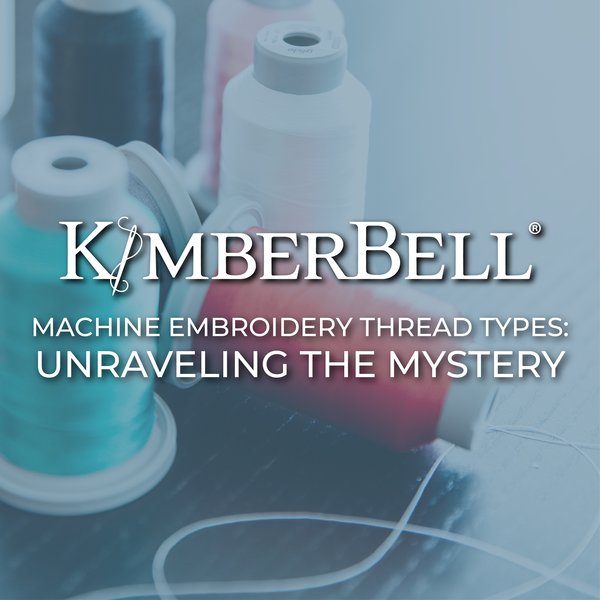Machine Embroidery Thread Types


For the machine embroidery enthusiast, shopping for thread is like being a kid in a candy store. (All of the colors are just so pretty!) But how do you know which type to choose?
Let's unravel thread's mysteries, including the different kinds and what the numbers on the label mean!
Polyester
Polyester thread is strong, lustrous, and colorfast, even when it's bleached. Available in a wide variety of vibrant colors, polyester thread performs very well during embroidery and is made from multiple synthetic filaments. (Some brands offer both shiny and matte finishes. )

Rayon
Rayon thread is soft, shiny, and available in a wide assortment of colors. Like polyester, rayon has a high tensile strength and consistently performs well during the embroidery process. Unlike polyester, rayon thread cannot be bleached and may fade when exposed to UV rays.

Cotton
In contrast to the glossy sheen of rayon and polyester, cotton thread has a natural matte finish. A favorite thread for quilting, redwork, cross-stitch designs and more, cotton thread looks a lot like hand embroidery when used on an embroidery machine.

Note: Because it’s made from natural fibers, cotton thread can generate more lint!
Metallic
Metallic threads add a glitzy element to embroidery designs, but they can be a little tricky to work with. Because the rayon (or polyester) core is wrapped with actual metal foil, metallic threads often twist or kink when coming off the spool.

To counter this, slow your machine down (Metallic thread generates heat!) and consider using a plastic cap or thread stand to help work out the kinks as the thread comes off the spool.
Bobbin Thread
Bobbin thread is generally available in cotton, spun polyester, and filament polyester. Cotton is popular with quilters, but it does produce some lint. Polyester bobbin thread does not produce lint, and filament polyester is a particular favorite because it’s both thin and strong.

Bobbin thread can be wound from spools to the bobbin case with your machine OR you can also buy prewound bobbins.
Tip: Check with your machine manual and/or dealer for specific model recommendations!
Specialty Thread
There are many specialty threads available to machine embroiderers today, including water-soluble, glow-in- the-dark, solar active, mylar, wool, silk, and more. When using a specialty thread, learn all you can about which needles, fabrics, and designs are appropriate for that specific thread.

Tip: Again, check to make sure a specialty thread will work for your specific machine!
Thread Weight
When looking at your thread spool, you’ll see several numbers printed on the label. Some of these numbers won't mean anything to you, but some are important . . .

For example, pay close attention to the weight, length, and the color ID number.
- Weight: In the example shown above, the "No. 40" designates the thread weight. Here's how it works: the higher the weight, the thinner the thread. The lower the weight, the thicker the thread. At Kimberbell, we generally use a 40 wt top thread and a 60 or 90 wt bobbin thread.
- Length: Shows how much thread comes on the spool (the "200m" shown above).
- Color ID Number: Use your favorite brand's ID number and/or name to identify a specific color so you can reorder.
Just as an artist chooses color for their canvas, thread is your way to create a timeless masterpiece! (Psssst! Tomorrow I'll share some tips about preventing thread breaks.) 😀
Happy stitching!


-1.png)
